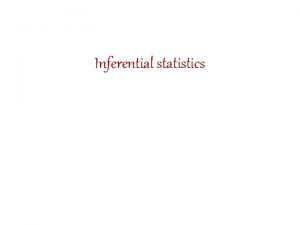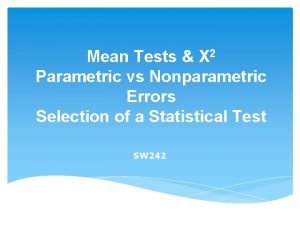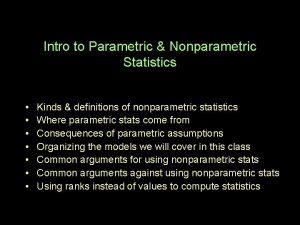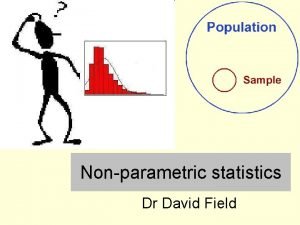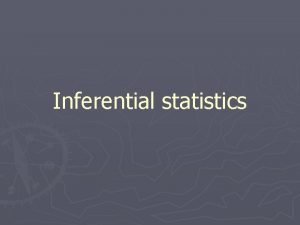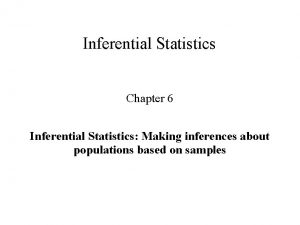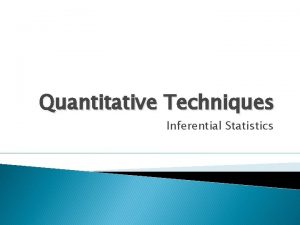Nonparametric Statistics MEANING Parametric statistical procedures inferential procedures






- Slides: 6

Non-parametric Statistics

MEANING �Parametric statistical procedures – inferential procedures that rely on testing claims regarding parameters such as the population mean μ, the population standard deviation, σ, or the population proportion, p. Many times certain requirements had to be met before we could use those procedures. �Nonparametric statistical procedures – inferential procedures that are not based on parameters, which require fewer requirements be satisfied to perform the tests. They do not require that the population follow a specific type of distribution.

Nonparametric Advantages �Most of the tests have very few requirements, so it is unlikely that these tests will be used improperly. �For some nonparametric procedures, the computations are fairly easy. �The procedures can be used for count data or rank data, so nonparametric methods can be used on data such as rankings of a movie as excellent, good, fair, or poor.

Nonparametric Disadvantages �The results of the test are typically less powerful. Recall that the power of a test refers to the probability of making a Type II error. A Type II error occurs when a researcher does not reject the null hypothesis when the alternative hypothesis is true. �Nonparametric procedures are less efficient than parametric procedures. This means that a larger sample size is required when conducting a nonparametric procedure to have the same probability of a Type I error as the equivalent parametric procedure.

Efficiency Nonparametric Sign test Test Parametric Single-sample z-test or t-test Test Efficiency of Nonparametric Test 0. 955 (for small samples from a normal population) 0. 75 (for samples of size 13 or larger if data are normal) Mann–Whitney test Inference about the difference of 0. 955 (if data are normal) two means—independent samples Wilcoxon matchedpairs test Inference about the difference of two means—dependent samples Kruskal–Wallis test One-way ANOVA Spearman rankcorrelation Linear correlation 0. 955 (if the differences are normal) 0. 955 (if the data are normal) 0. 864 (if the distributions are identical except for medians) 0. 912 (if the data are bivariate coefficient normal)

Summary �Nonparametric tests require few assumptions, and thus are applicable in situations where parametric tests are not �In particular, nonparametric tests can be used on rankings data (which cannot be analyzed by parametric tests) �When both are applicable, nonparametric tests are less efficient than parametric tests
